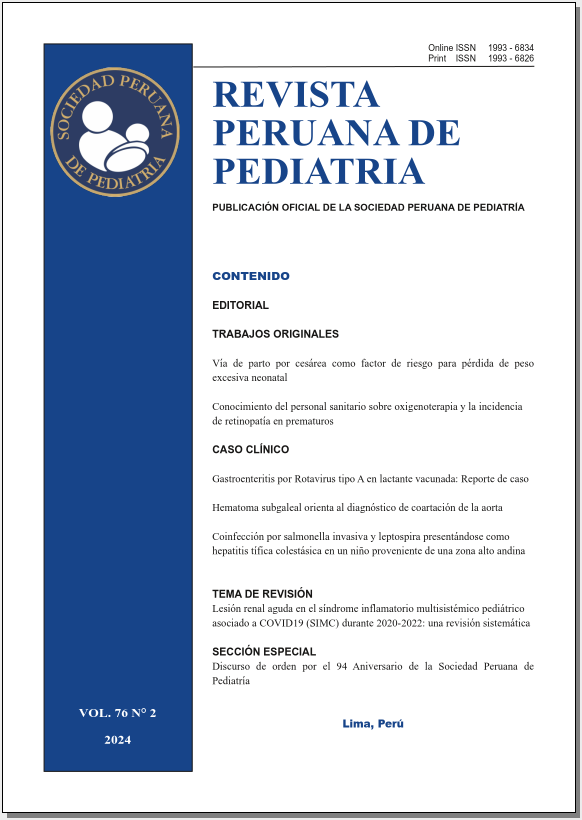Coinfection with invasive salmonella and leptospira presenting as cholestatic typhus hepatitis in a child from a high Andean area
DOI:
https://doi.org/10.61651/rped.2024v76n2p3c1-6Keywords:
Leptospira, Typhoid fever, SalmonellaAbstract
Typhoid fever is endemic in our environment and leptospirosis is an emerging zoonosis in the last 5 years. Recent reports show co-infection of salmonella and leptospira, with complications such as intestinal obstruction, splenic abscess, vertebral osteomyelitis, among others, observed during its evolution. Objective: to report the case of an 8-year-old boy from Ayacucho who presented with invasive salmonella and leptospira presenting as cholestatic typhus hepatitis. Clinical case: schoolboy who presented persistent fever associated with abdominal pain, hepatosplenomegaly and cholestatic jaundice with positive blood culture for salmonella thypi and positive ELISA Ig M serology for leptospira. During the evolution of the Co-infection, he presented acute hepatitis with a cholestatic pattern and delay in clinical recovery and normalization of liver tests. Conclusion: despite the high prevalence of typhoid fever in our environment and the growing increase in leptospira cases, we suggest the search for salmonella and leptospira infection in patients with persistent fever associated with gastrointestinal symptoms, even more so if they have a history of epidemiological importance in order to avoid serious complications during evolution.
Downloads
Downloads
Published
How to Cite
Issue
Section
Categories
License
Copyright (c) 2024 Rómulo Huamani Egocheaga, José Curi Dávila, Amalia Luque Huancapaza

This work is licensed under a Creative Commons Attribution 4.0 International License.
Authors will retain the copyright and grant the right to publish their work in the journal while allowing third parties to share it under the Creative Commons Attribution license.
Articles are published under a Creative Commons license that allows sharing and adaptation with appropriate credit. CC BY 4.0 license. Available in English at https://creativecommons.org/licenses/by/4.0/
Authors may use other information disclosure formats as long as the initial publication in the journal is cited. The dissemination of the work through the Internet is recommended to increase citations and promote academic exchanges.
The published content does not necessarily reflect the specific point of view of the journal, and the authors assume full responsibility for the content of their article.




